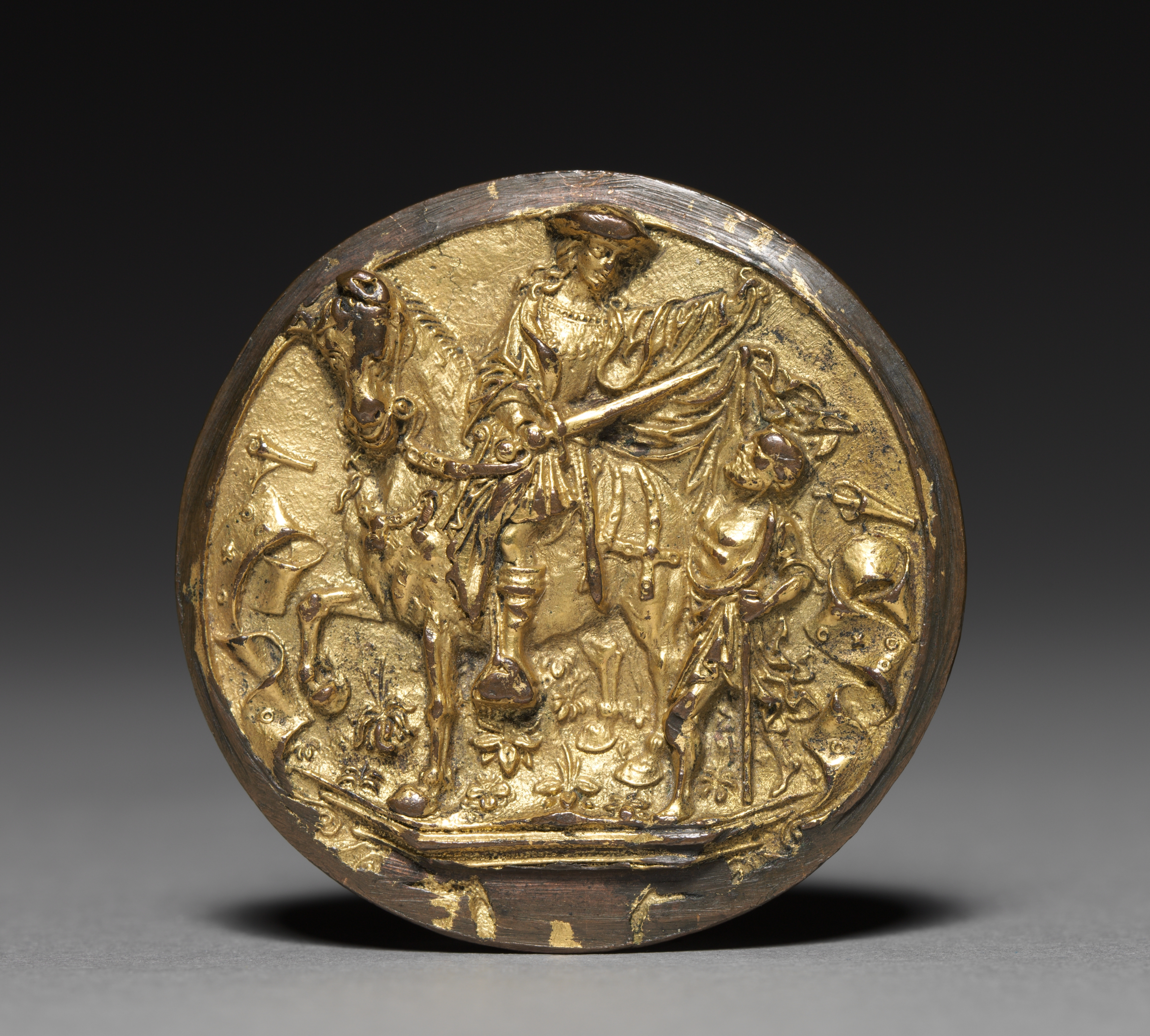The Cleveland Museum of Art
Collection Online as of April 19, 2024

Saint Martin and the Beggar
early 1500s
Diameter: 4.5 cm (1 3/4 in.)
Gift of Mrs. Chester D. Tripp 1971.163
Location: not on view
Description
This plate is an appliqué seal, intended as a decorative element for a garment or possibly as a simple pilgrimage medallion. The work tells a story of charity. It depicts Martin of Tours, a French soldier of the fourth century who, when accosted by a beggar at the gates of Amiens, cut a portion of his cloak and gave it to him. St. Martin is depicted midway through cutting away his cloak with his saber. The bronze is often attributed to an artist in the northern Netherlands, which is due in part to the popularity of several motifs there at the turn of the sixteenth century. The depiction of plantlife, for instance, is highly detailed, recalling Netherlandish scenes of the time. A similar seal (now in Berlin) belonged to Johann Potken, who has the provost of the Monastery of St. Martin. This monastery was located in the now-German city of Emmerich am Rhein, not far from the Dutch city of Nijmegen. Despite the seal's Germanic attributes, the figures' physical qualities suggest the artist's awareness of Italian Renaissance art.- Julius Böhler (Munich, Germany), 1971, sold to the Cleveland Museum of Art, 1971.
- Master Goldsmiths of the Renaissance: Their Models and Designs. The Cleveland Museum of Art, Cleveland, OH (organizer) (November 2, 1982-March 20, 1983).Year in Review: 1971. The Cleveland Museum of Art, Cleveland, OH (organizer) (December 28, 1971-February 6, 1972).
- {{cite web|title=Saint Martin and the Beggar|url=false|author=|year=early 1500s|access-date=19 April 2024|publisher=Cleveland Museum of Art}}
Source URL:
https://www.clevelandart.org/art/1971.163